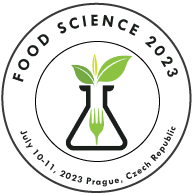
Dr Gideon Onuoha
The Federal Polytechnic Bauchi,Nigeria
Title: THE POTENTIAL OF EXTENDING THE SHELF LIFE OF MEAT BY ENCAPSULATION WITH RED CLAY
Biography
Biography: Dr Gideon Onuoha
Abstract
Meat is a perishable food of good nutrition. Meat ranks among the most significant, nutritious, and favored food items available to most locals. It is a good source of protein (17-19%), depending on sources, and contains appreciable amounts of fat and moisture. However, it has a very short shelf life due mainly to its high moisture, fat, and other nutrient contents. Meat spoilage can result from microbial proliferation as well as inherent enzymes in the meat tissues. Bacteria contamination and permeability to both oxygen and water vapor are major concerns associated with spoilage of meat and its storage. Packaging is fundamental in the preservation and presentation of food. Red clay is a very common substance; hydrous aluminum phyllosilicate, sometimes with varying amounts of iron, magnesium, alkali metals, alkaline earth, and cation formed from sedimentary rocks. Furthermore, red clay is an extremely absorbent material and develops plasticity when wet due to the molecular film of water surrounding the clay particles but can become hard, impervious, brittle, and non-brittle and non-plastic when dry. In developing countries, the high cost of refrigeration technologies and most other methods of preserving meat are exorbitant and thus can be substituted with the less expensive and readily available red clay for the preservation of meat. Methodology: 1000g of lean meat was diced into cubes of 10g each. The sample was then divided into four groups labelled raw meat (RMC); raw in 10% brine solution (RMB), boiled meat (BMC), and fried meat (FMC). It was then encapsulated with 2mm thick red clay and then heated in a muffle furnace at a temperature of 600OC for 30min. The samples were kept on a bench top for 30 days, and a storage study was carried out. Results: Our findings showed a decrease in value during storage for the physiochemical properties of all the sample; pH values decreased [RMC (7.05-7.6), RMB (8.46-7.0), BMC (6.0-5.0), FMC (4.08-3.9)]; free fatty acid content decreased with storage time [RMC (32.6%-31%), RMB (30.2%-28.6%), BMC (30.5%-27.4%), FMC (25.6%-23.8%)]; total soluble solid value decreased [RMC16.20-15.07, RMB (17.22-16.04), BMC (17.05-15.54), FMC (15.3-14.9)]. Conclusion: This result shows that encapsulation with red clay reduced all the values analyzed and thus has the potential to extend the shelf life of stored meat.

